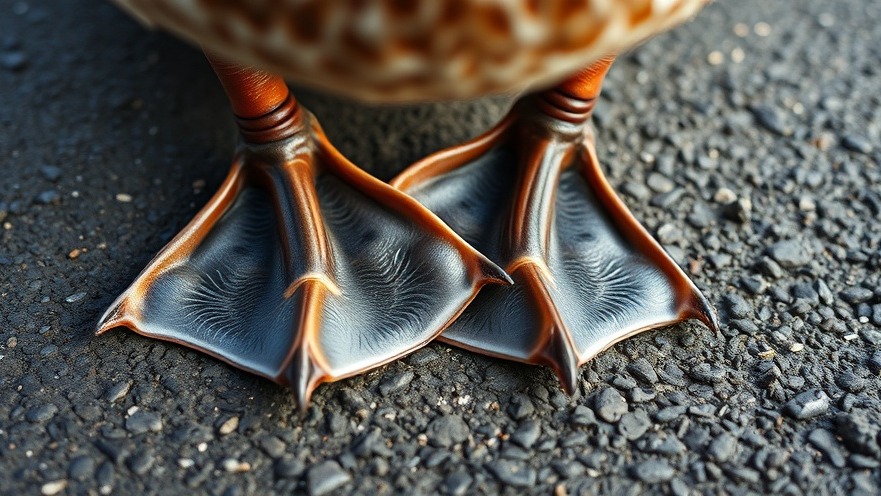
The Marvel of Webbed Feet: Nature's Ingenious Design
When we look at birds gracefully gliding across the water, it’s hard not to marvel at the adaptations that make it possible. Among these adaptations, webbed feet stand out as a fascinating example of evolutionary ingenuity. These specially designed feet allow birds not only to swim efficiently on the surface but also to dive beneath the waves. From ducks and geese to loons and cormorants, over 400 bird species boast this remarkable feature.
How Evolution Shaped Aquatic Adaptations
Webbed feet evolved independently in various bird groups, showcasing the adaptability of life in response to environmental demands. The design of a triangular webbed foot has been shown through experiments to optimize propulsion in water. When birds swim, their toes and webs spread out to push backward, propelling them forward. Conversely, as they pull their feet in, the toes fold together to reduce resistance, resulting in an elegant and effective swimming technique that many humans would envy.
Webbed Feet: A Common Theme Across Species
Interestingly, webbed feet are not solely confined to birds. Other creatures that thrive in aquatic environments, such as otters, frogs, and salamanders, display similar adaptations. This parallel evolution emphasizes that webbed feet are not just a cool feature; they represent a significant evolutionary success that enhances mobility in water-dwelling species.
The Ripple Effect of Adaptation
Webbed feet have become a big evolutionary success story, illustrating the beauty and complexity of nature's designs. As we observe birds with webbed feet, we gain insights into how adaptations shape ecological interactions and species survival. Whether paddling along a serene lake or surfing ocean waves, these birds remind us of the extraordinary innovations that enable life to flourish in diverse habitats.
 Add Row
Add Row  Add
Add 




Write A Comment